China 'copycat' buildings: Government clamps down on foreign imitations
- Published
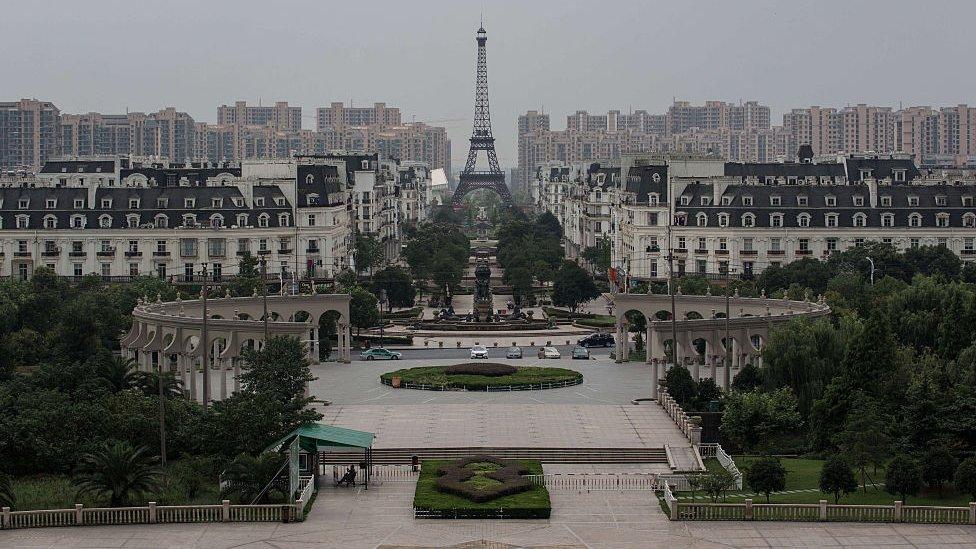
Paris? Actually a replica in Tianducheng, Hangzhou, Zhejiang province
From English towns, to Alpine villages, to the Eiffel Tower - copies of foreign architecture can be seen across China.
But now the government is clamping down, in order to promote local design.
A government statement says "plagiarising, imitating, and copycatting" designs is prohibited in new public facilities.
The statement says buildings "reveal a city's culture" - and that "large, foreign, and weird" designs should be limited.
The guidelines also clamp down on new skyscrapers - limiting them, in general, to a maximum of 500 metres.
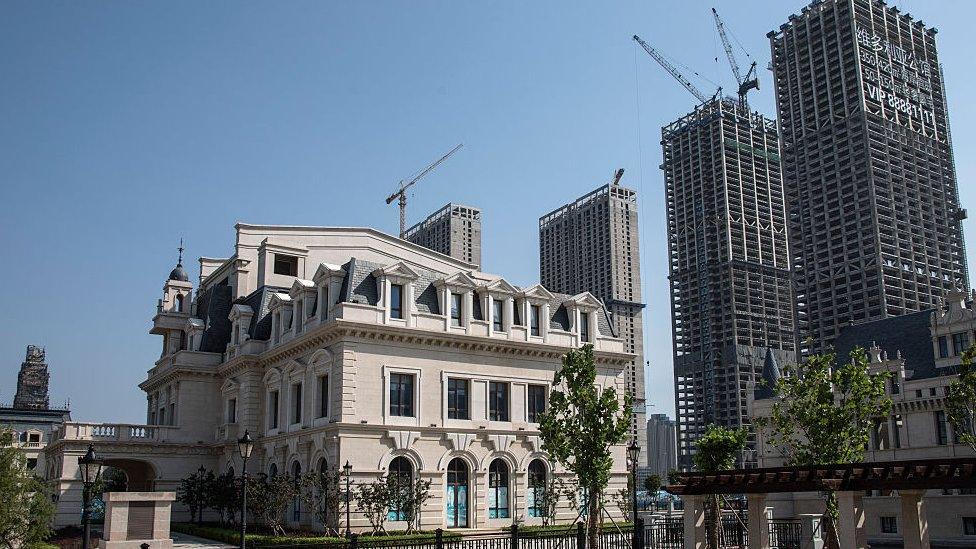
New European-style buildings by tower blocks in Dalian, China
According to the Global Times, the "fake, shoddy versions" of foreign buildings appear in "many third and fourth-tier Chinese cities".
The government did not say what will happen to existing "foreign" buildings, but does say there will be "city inspections" to check for problems.
The statement, issued on 27 April but only reported this week, singles out stadiums, exhibition centres, museums and theatres as public facilities where it's especially important to ban plagiarism.
"City constructions are the combination of a city's external image and internal spirit, revealing a city's culture," the government statement says.
It calls for a "new era" of architecture to "strengthen cultural confidence, show the city's features, exhibit the contemporary spirit, and display the Chinese characteristics".
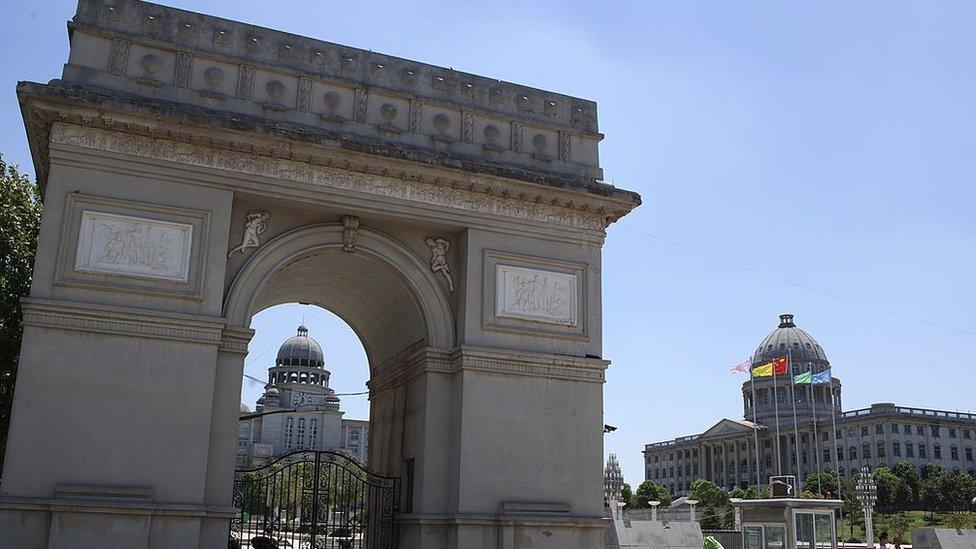
Not the Arc de Triomphe, but a college gate in Wuhan
The guidelines on "foreign" architecture were mostly welcomed on Chinese social media.
"The ban is great," wrote a Weibo user, according to state media the Global Times., external "It's much better to protect our historical architectures than build fake copycat ones."
Another recalled seeing an imitation White House in Jiangsu province. "It burned my eyes," she said.
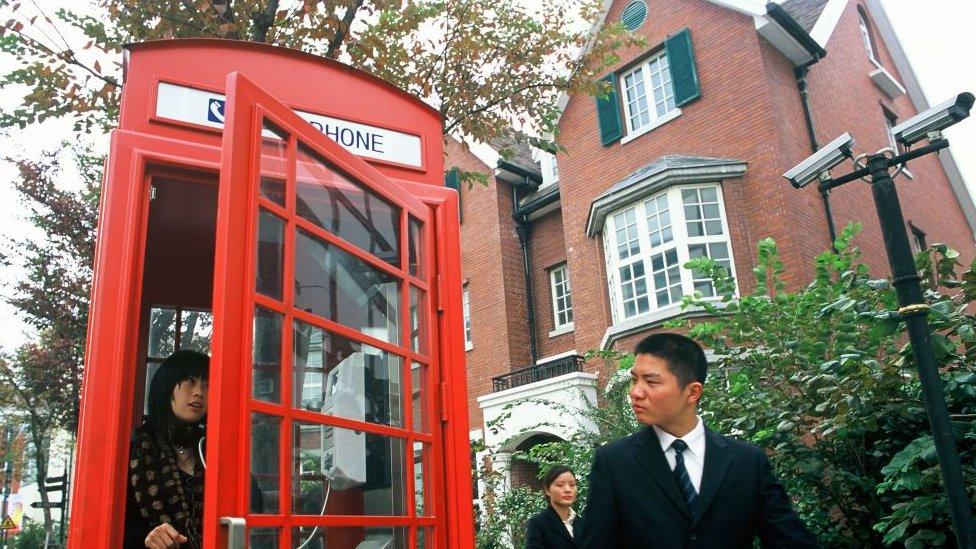
Thames Town, an English-themed town near Shanghai, pictured in 2008
In 2013, the BBC visited "Thames Town", an imitation English town in Songjiang in Shanghai.
The town features cobbled streets, a medieval meeting hall - even a statue of Winston Churchill - and was a popular spot for wedding photos.
"Usually if you want to see foreign buildings, you have to go abroad," said one person. "But if we import them to China, people can save money while experiencing foreign-style architecture."
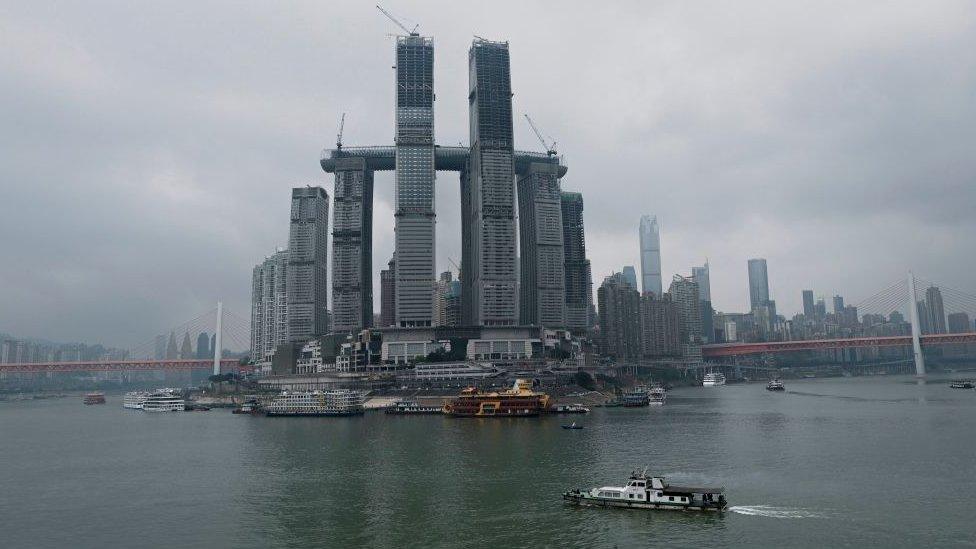
Raffles City, Chongqing, in 2019 - mimicking the Marina Bay Sands hotel in Singapore
China, of course, is not the only country to borrow - or copy - other countries' designs.
Las Vegas in the US revels in its imitations of iconic foreign architecture including the Eiffel Tower and Venetian canals.
Thailand also has developments that mimic the Italian countryside and charming English villages, mainly aimed at domestic tourists.

The Eiffel Tower in Las Vegas
- Published1 July 2013
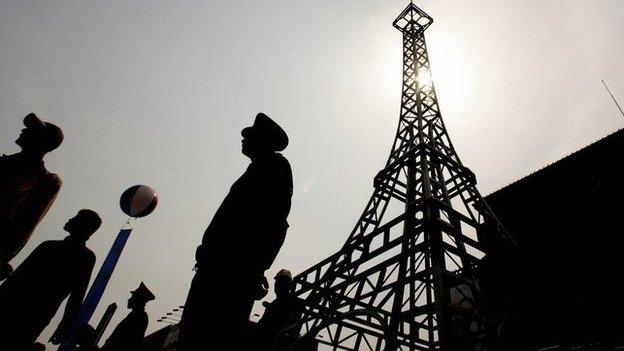
- Published22 February 2016
